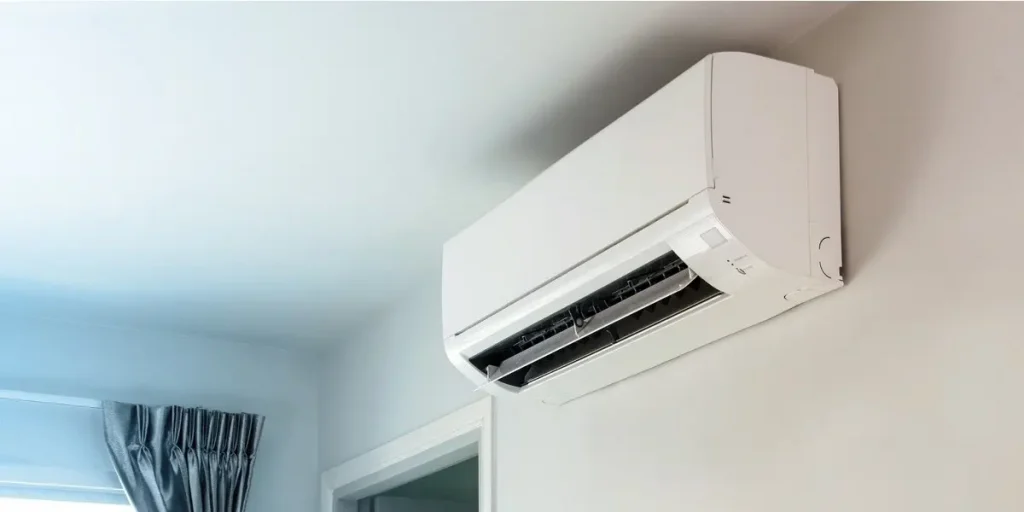Ductless air conditioning systems, also known as mini-split systems, have rapidly gained popularity due to their efficiency and versatility. In this guide, we’ll delve into what ductless AC is, its advantages and disadvantages, how it operates, and how to ensure you get the best value when purchasing one.
What is Ductless AC and When is it Useful?
Ductless AC systems are air conditioning units that do not require ductwork to distribute air. Instead, they consist of an outdoor compressor unit and one or more indoor air handling units, connected by refrigerant lines. These systems are particularly useful in scenarios where:
-
Retrofitting a home without existing ductwork.
-
Room additions or home extensions where extending ductwork is not feasible.
-
Older homes with no room for ductwork installation.
-
Energy efficiency is a priority, as they often provide more efficient heating and cooling compared to window units or central HVAC systems.
Comparing Ductless AC to Other Air Conditioning Systems
Advantages of Ductless AC
-
Energy Efficiency: Ductless systems typically use less energy than traditional HVAC systems because they eliminate energy losses associated with ductwork.
-
Flexibility: They can be installed in various configurations to cool individual rooms or zones, offering greater control over indoor environments.
-
Easy Installation: Installation is generally less invasive and quicker compared to installing ducted systems.
-
Quiet Operation: Indoor units are designed to operate quietly, making them ideal for bedrooms and living spaces.
Disadvantages of Ductless AC
-
Initial Cost: The upfront cost of ductless systems can be higher than traditional HVAC systems, although this can be offset by long-term energy savings.
-
Aesthetics: Indoor units can be more visible compared to the discreet vents of a central system.
-
Maintenance: Regular maintenance is required to keep the system running efficiently, including cleaning filters and checking refrigerant levels.
How Ductless AC Provides Heating and Cooling
Ductless AC systems use a heat pump to provide both heating and cooling:
-
Cooling Mode: The system extracts heat from the indoor air and transfers it outside, lowering the indoor temperature.
-
Heating Mode: The system reverses the process, extracting heat from the outside air (even in cold weather) and transferring it indoors.
This dual functionality makes ductless systems a versatile option for year-round climate control.
Installation of Ductless AC
Steps for Installation
-
Assessment: Evaluate the space to determine the number and placement of indoor units.
-
Mounting: Install the indoor units on walls or ceilings, ensuring they are securely mounted.
-
Connecting: Run the refrigerant lines, electrical wiring, and condensate drain lines between the indoor and outdoor units.
-
Testing: Once installed, the system should be tested for proper operation and refrigerant levels.
Professional Installation
While some DIY enthusiasts might be tempted to install a ductless system themselves, professional installation is recommended to ensure optimal performance and efficiency.
Ensuring the Safety of Your Ductless AC
Safety Tips
-
Regular Maintenance: Schedule periodic maintenance checks to ensure the system operates safely and efficiently.
-
Proper Installation: Ensure the system is installed by certified professionals.
-
Electrical Safety: Verify all electrical connections are secure and up to code to prevent any potential hazards.
-
Leak Checks: Regularly check for refrigerant leaks, which can be harmful to both the environment and your health.
Purchasing Affordable and High-Quality Ductless AC
Tips for Finding Affordable Options
-
Research Brands: Look for reputable brands known for quality and reliability.
-
Compare Prices: Shop around and compare prices from different retailers and online stores.
-
Check Reviews: Read customer reviews to gauge the performance and reliability of the unit.
-
Look for Rebates: Check for any available rebates or tax incentives for energy-efficient appliances.
Popular Models and Brands
Some well-known brands include Mitsubishi, Daikin, LG, and Fujitsu, all of which offer a range of models to suit different needs and budgets.
Analyzing Ductless AC Adoption in the U.S.
Installation Trends and Data
According to the U.S. Department of Energy, the adoption of ductless AC systems has been steadily increasing. The table below summarizes the estimated number of installations and common reasons for opting for ductless systems:
|
Year
|
Estimated Installations
|
Common Reasons for Installation
|
|
2020
|
500,000
|
Retrofit existing homes, energy efficiency
|
|
2021
|
600,000
|
Room additions, older home upgrades
|
|
2022
|
725,000
|
Environmental concerns, rising energy costs
|
|
2023
|
850,000
|
Increased awareness, technological advancements
|
|
2024
|
1,000,000 (projected)
|
Enhanced affordability
|
Source: U.S. Department of Energy, projected based on current trends.
References
-
-
-

